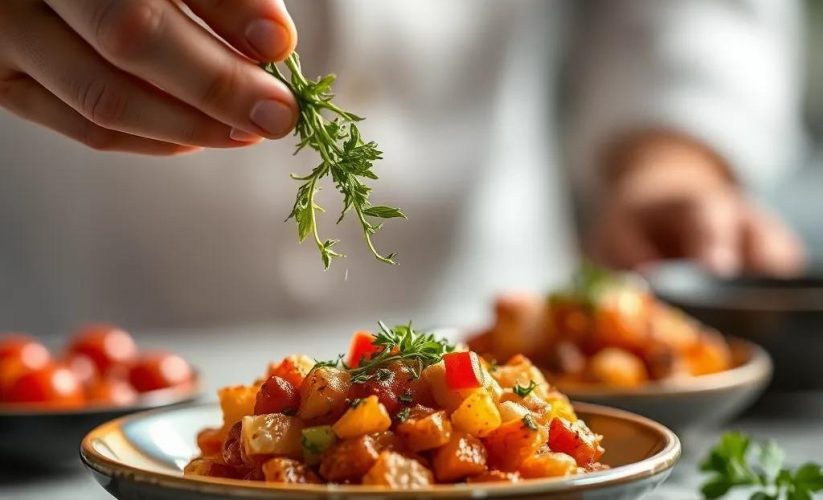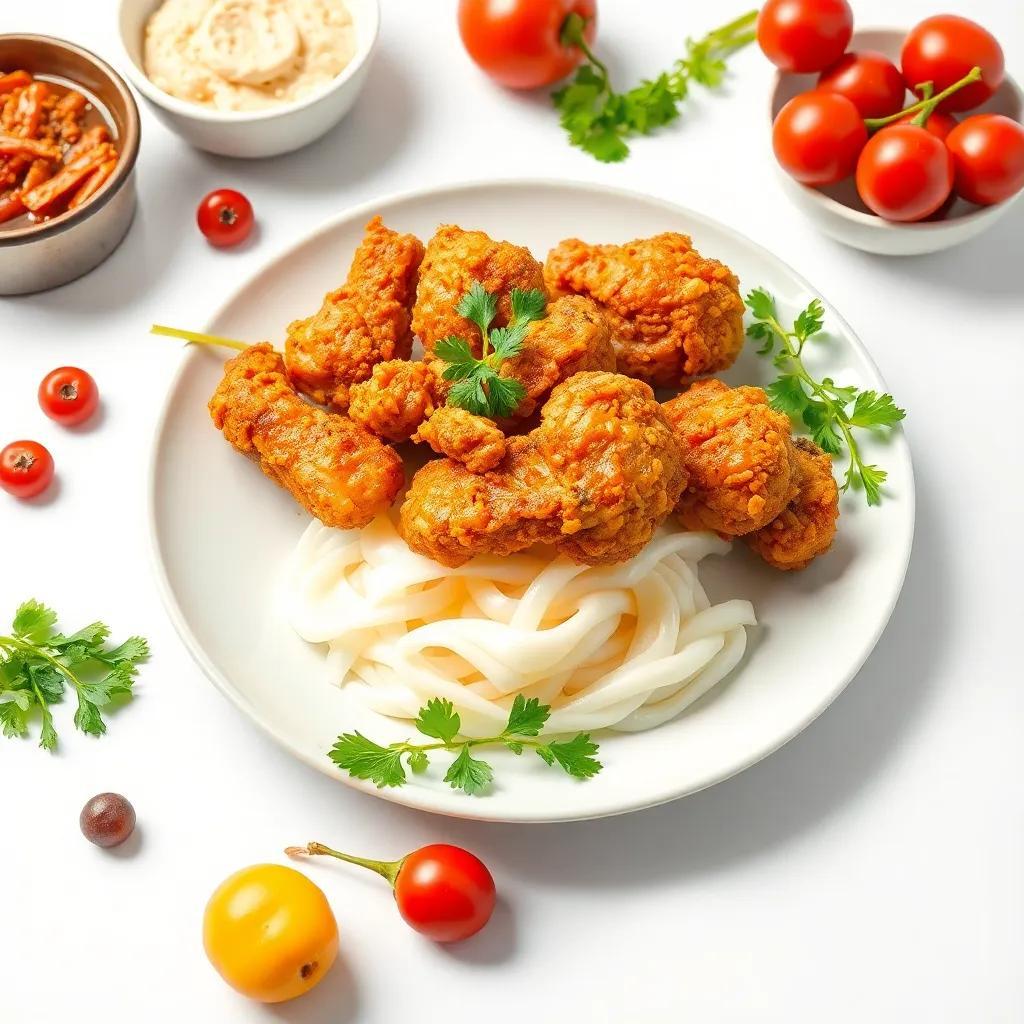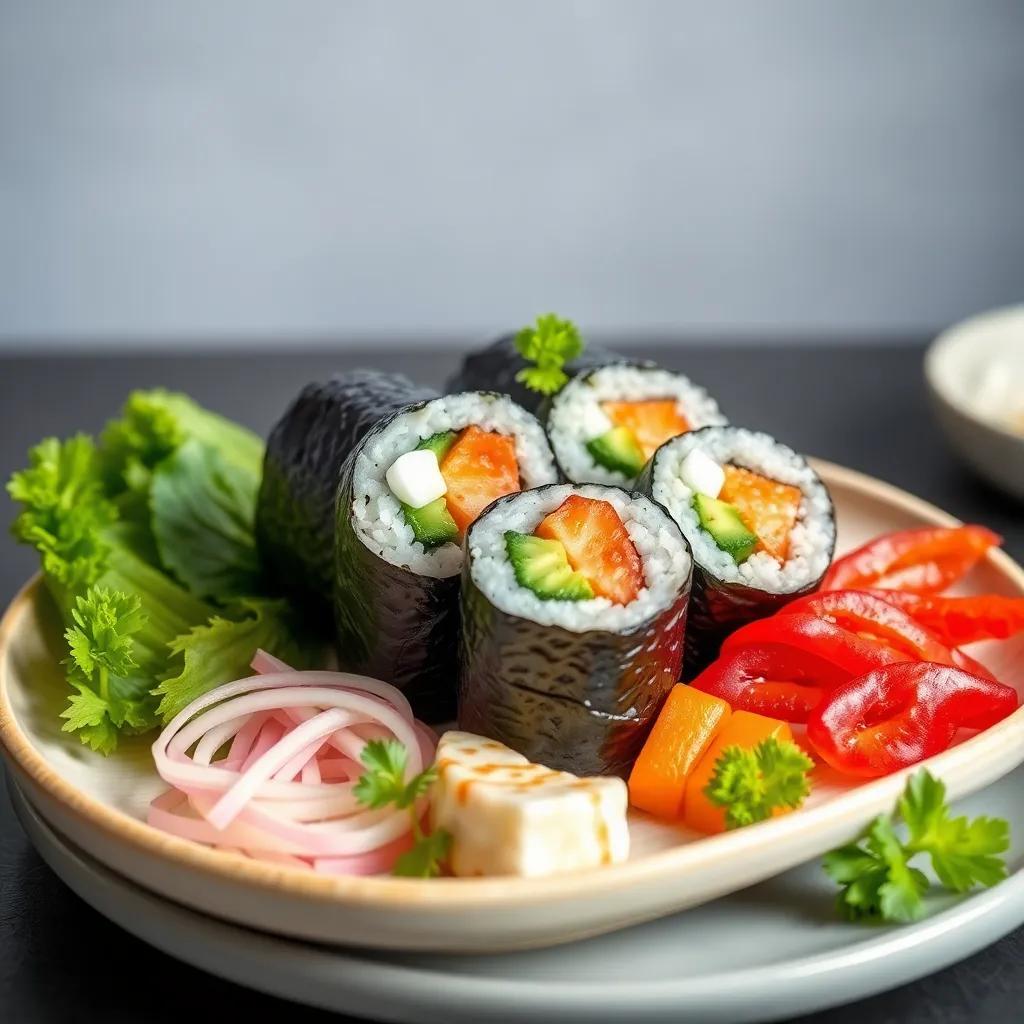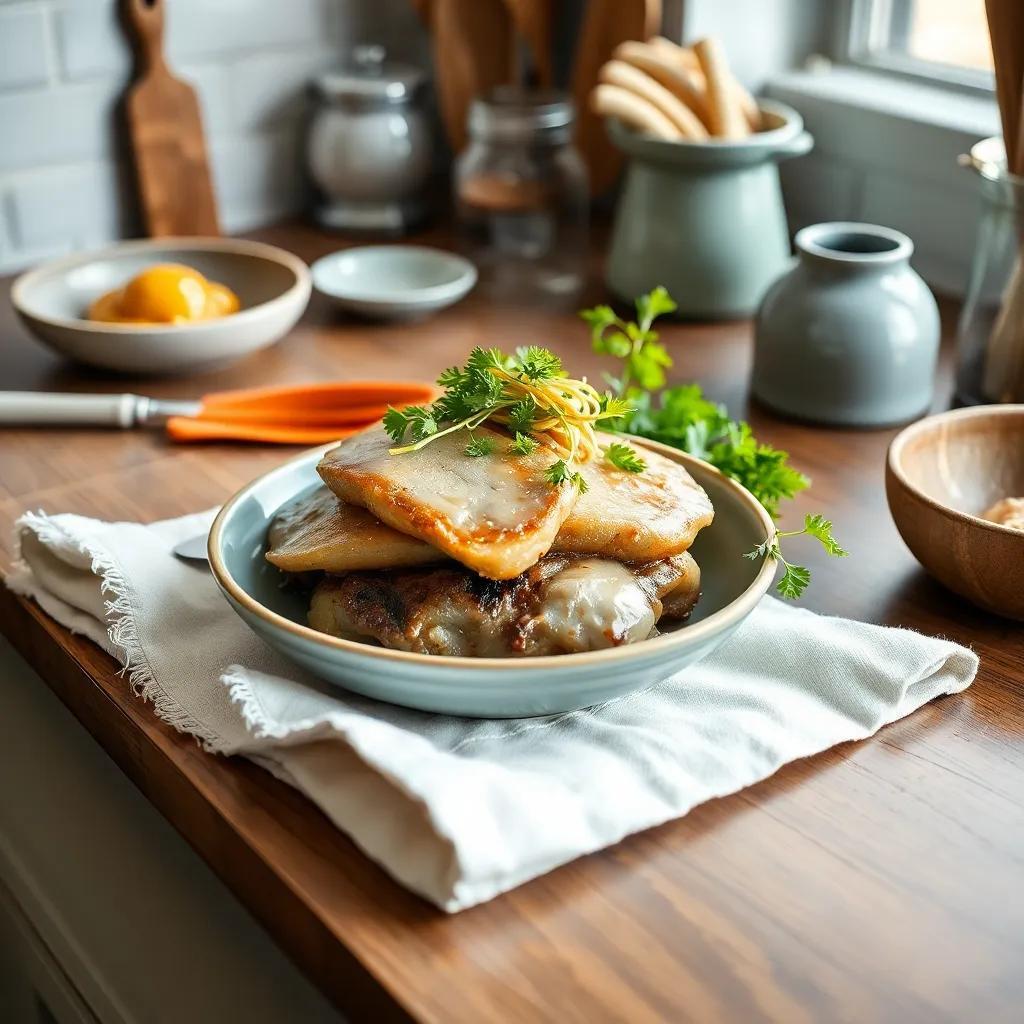Unlock the Bold Flavors of Easy Kimchi Jjigae: A Classic Korean Stew
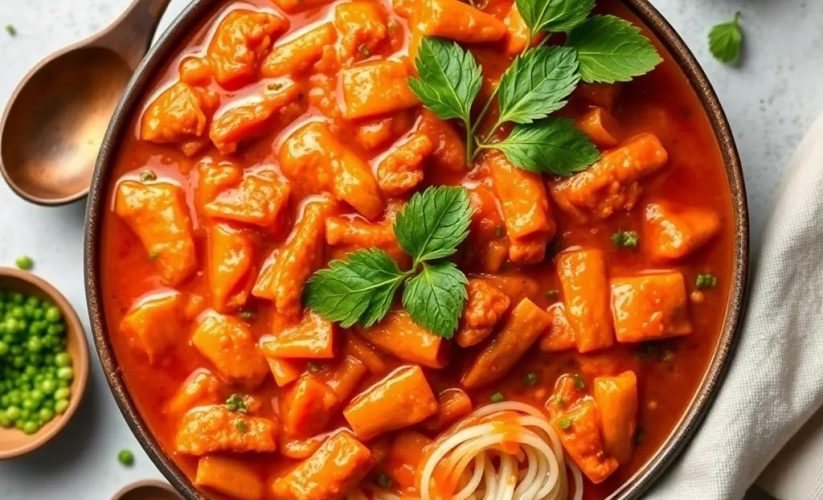
Unlock the Bold Flavors of Easy Kimchi Jjigae: A Classic Korean Stew
🌍 Cuisine: Korean
⚙️ Difficulty: Easy
Ingredients
Nutrition Facts
250 kcal
Instructions
- Prepare all ingredients: chop kimchi, slice pork, onions, and green onions; cut tofu into cubes if using.
- Heat a medium pot over medium heat and add the pork slices. Cook until pork is lightly browned, about 3-4 minutes.
- Add minced garlic and sliced onion to the pot, stir-frying together with the pork for 2 minutes until fragrant.
- Add the chopped kimchi to the pot and cook for another 5 minutes, allowing the flavors to deepen and kimchi to soften.
- Sprinkle in gochugaru (Korean red pepper flakes) and soy sauce, stir well to combine.
- Pour in 3 cups of water or anchovy broth and bring the stew to a boil.
- Once boiling, reduce heat to medium-low and simmer uncovered for 15-20 minutes to develop rich flavors.
- Add tofu cubes gently into the stew and simmer for another 5 minutes to warm through without breaking the tofu.
- Season the stew with salt and pepper to taste, then drizzle sesame oil over the top for a fragrant finish.
- Sprinkle chopped green onions on top as garnish.
- Remove from heat and serve hot with steamed rice and side dishes (banchan).
Serving Suggestions
- Serve with a bowl of steamed white rice to balance the spicy and tangy stew.
- Pair with traditional Korean side dishes (banchan) like seasoned spinach, pickled radishes, or stir-fried bean sprouts.
- Add a raw egg yolk on top of the hot stew for extra richness (optional).
- Enjoy with crispy pan-fried Korean pancakes (pajeon) for a full meal experience.
- Serve alongside Korean barley tea (boricha) or cold green tea to refresh the palate.
- For a vegetarian version, omit pork and use vegetable or mushroom broth instead.
- Spice level can be adjusted by adding more or less gochugaru according to taste.
Table of Contents
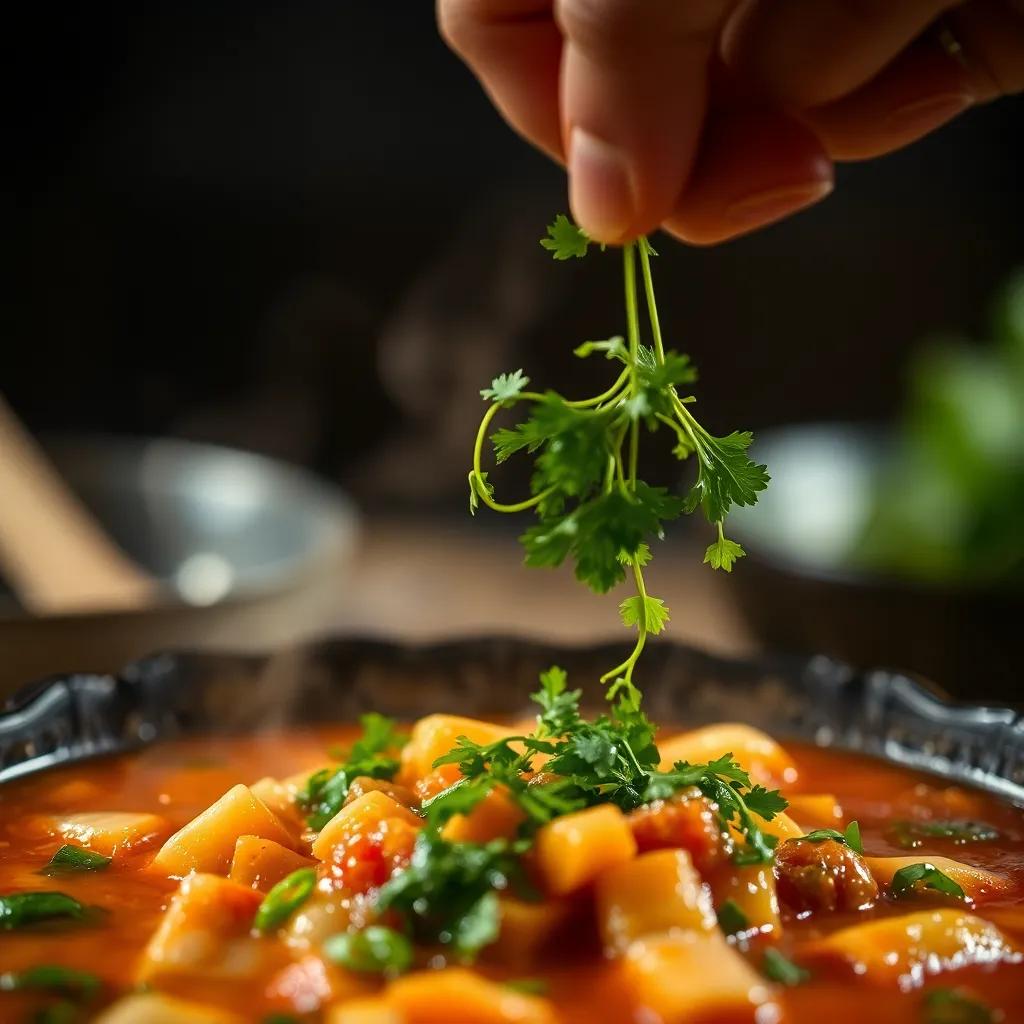
Intro
There’s something deeply comforting about a steaming bowl of kimchi jjigae, a staple Korean stew that effortlessly marries spice, tang, and warmth in every spoonful. What makes this recipe truly inviting is how approachable it is: a handful of humble ingredients come together quickly to create a dish that feels both hearty and vibrant. Whether you’re new to Korean cuisine or looking to recreate a beloved classic at home, this stew offers a satisfying way to unlock bold, layered flavors without fuss or fancy techniques.
Perfect for chilly evenings when you crave something soothing yet exciting, kimchi jjigae shines as a communal dish that brings people together—imagine sharing it with family or friends around the table, each bite inviting conversation and comfort. Its rich, tangy broth pairs effortlessly with simple steamed rice, making it an ideal centerpiece for casual dinners, weeknight meals, or whenever you want a taste of traditional Korean home cooking with minimal effort. Beyond the bowl, it’s a celebration of culture and flavor that’s accessible to all levels of cooks.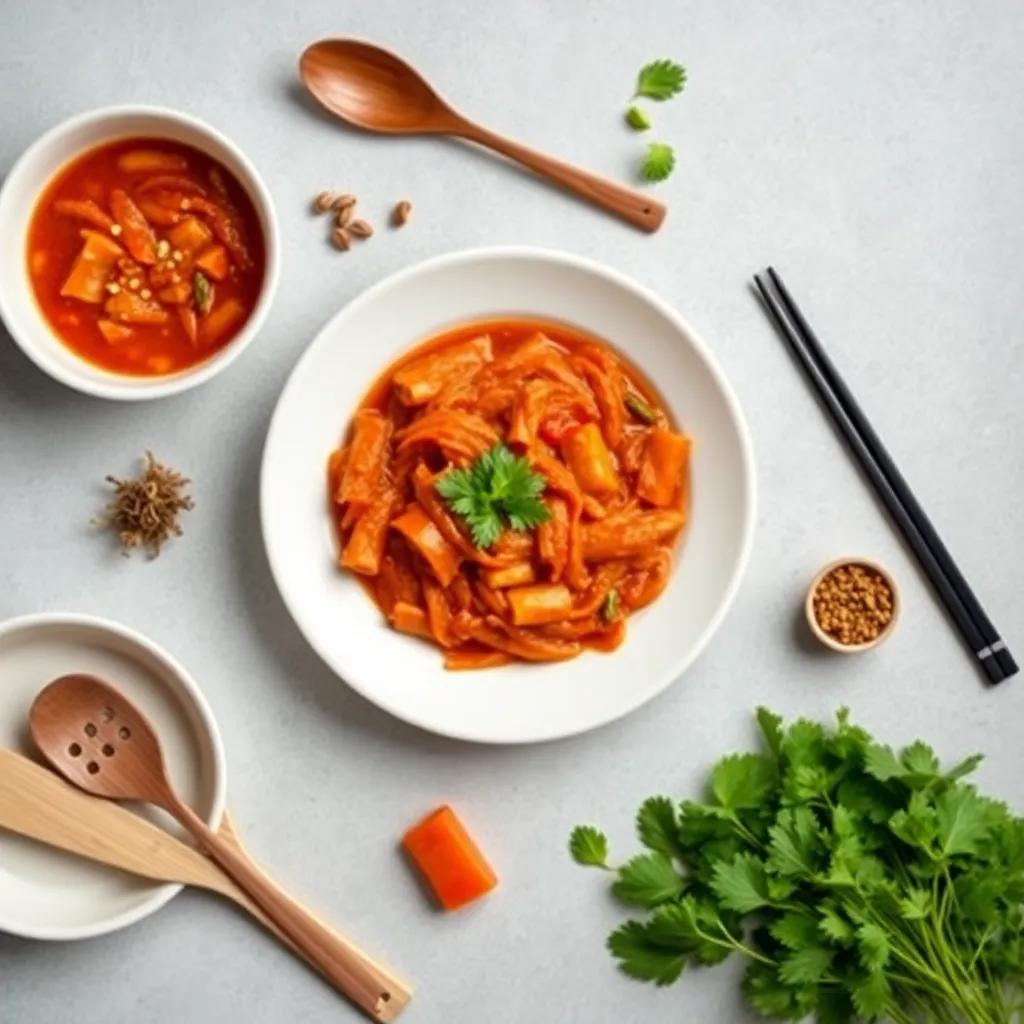
Ingredient Notes
One of the defining stars of this stew is well-fermented kimchi—the soul of kimchi jjigae. Its depth of flavor comes from fermentation, which transforms fresh cabbage into a tangy, spicy, and umami-packed powerhouse. When shopping for kimchi, choose one that’s visibly aged with reddish juices pooling at the bottom of the jar or container. This ensures your stew will have that signature punch of acidity and complexity. If fresh or mildly fermented kimchi is what you find, consider letting it sit for a few days at room temperature to develop more character before cooking.
Gochugaru, or Korean red pepper flakes, is another essential ingredient that adds both heat and a subtle smokiness, different from generic chili powders you may already have. When selecting gochugaru, look for bright red flakes that smell fragrant and slightly sweet; fresher flakes will greatly elevate your stew’s flavor and color. If you can’t find gochugaru, crushed red pepper flakes can work in a pinch but expect a sharper, less nuanced spice profile.
The choice between water or anchovy broth as your cooking liquid dramatically influences the stew’s depth. Anchovy broth—made by simmering dried anchovies and kelp—is a traditional base that imparts a delicate oceanic umami, rounding out the stew’s boldness. If you prefer a plant-based or lighter broth, a simple vegetable stock or even water with a touch of seaweed infusion can provide a satisfying alternative without overwhelming the palate.
Finally, while tofu is optional, it’s a classic addition that offers a soft, cooling contrast to the stew’s heat and acidity. Korean soft tofu (soondubu) is ideal if available, but regular firm tofu cut carefully into cubes will do nicely. When adding tofu, gently fold it in near the end of cooking to keep its shape and creamy texture intact, allowing it to soak up the broth’s flavor without crumbling.
Each of these ingredients plays a vital role in balancing the stew’s dynamic flavors, and thoughtful selection or substitution here can mean the difference between a good bowl and a truly memorable one.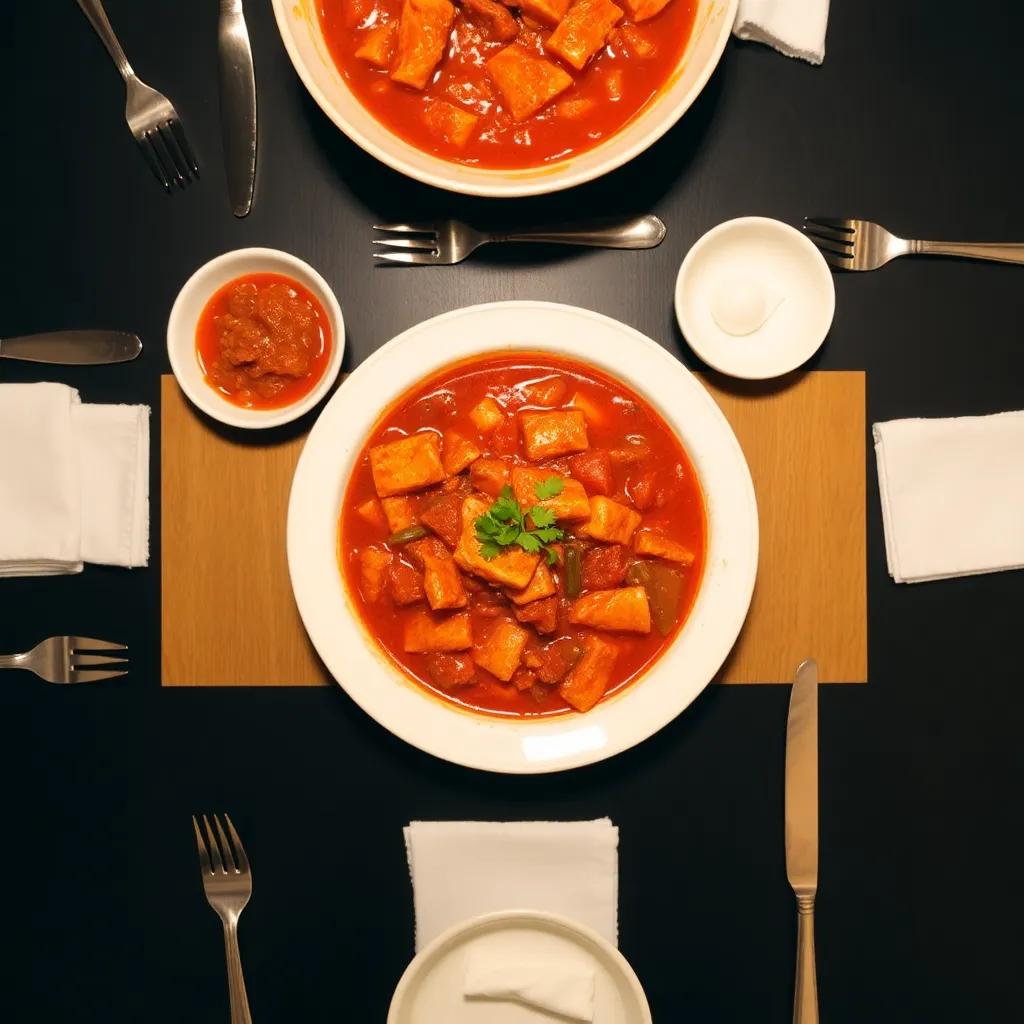
Tips & Variations
Mastering kimchi jjigae is as much about flexibility as it is about tradition. Here are some tips and variations to help you tailor this beloved stew to your tastes and dietary needs:
- Balancing Acidity and Spice: The stew’s signature tanginess comes from well-fermented kimchi. If your kimchi is very sour or spicy, temper the heat by adding a small pinch of sugar or a splash of mild broth. Conversely, for a bolder kick, increase the gochugaru gradually, tasting as you go to avoid overpowering the natural complexity.
- Meat Alternatives and Vegan Options: While pork belly or shoulder provide richness and depth, you can swap them for thinly sliced beef brisket or chicken thighs for a different but equally satisfying flavor. For a vegan or vegetarian version, omit meat and substitute the anchovy broth with vegetable or mushroom stock. Silken tofu or hearty mushrooms like shiitake add body without animal protein.
- Tofu Tweaks: When adding tofu, choosing soft or medium-firm varieties offers a delicate texture contrast, but feel free to experiment with pan-fried tofu cubes for a bit of chew and caramelization. To maintain tofu integrity, gently lower cubes into the simmering stew and avoid stirring vigorously.
- Layering Umami: Elevate the broth by incorporating a spoonful of doenjang (fermented soybean paste) or a small handful of dried shiitake mushrooms simmered in the broth—both add a deep, earthy savoriness. Adding a dash of fish sauce near the end can also enhance umami without making the stew fishy.
- Vegetable Add-ins: Try tossing in sliced zucchini, mushrooms, or enoki near the end of cooking to add texture, nutrients, and seasonality. Napa cabbage leaves or spinach can also be stirred in briefly for a fresh, tender bite.
- Adjusting Saltiness and Soy Sauce: Soy sauce is integral for depth, but consider using tamari or coconut aminos as gluten-free alternatives. Taste before final seasoning, as kimchi and broth can already contribute significant saltiness.
- Serving Style: For a fun presentation, serve kimchi jjigae in traditional stone pots (dolsot) to keep it piping hot at the table. Garnish with toasted sesame seeds for an extra nutty aroma and crunch.
- Batch Cooking and Fermentation Tip: The stew tastes even better the next day after flavors meld. Consider making a larger batch and gently reheating it. If in a rush, using pre-made kimchi jjigae sauce packets is convenient, but fresh homemade versions deliver a more nuanced flavor profile.
By embracing these tweaks, you can make kimchi jjigae uniquely yours, whether you’re looking for a fiery feast, a mild comfort stew, or a plant-based delight that respects tradition while honoring your personal taste.
Leftovers & Storage
When it comes to preserving the vibrant flavors of your homemade kimchi jjigae, proper storage and handling of leftovers can make all the difference. This stew, with its bold tang and spicy warmth, actually benefits from a little resting time, as the flavors continue to deepen and meld after cooking—but only if stored correctly.
To store leftover kimchi jjigae, let the stew cool down slightly at room temperature, but avoid leaving it out for more than two hours to minimize any bacterial growth. Transfer the stew into airtight containers—glass or BPA-free plastic containers with snug lids are ideal. Because kimchi jjigae is liquid-rich, containers with secure seals will prevent any leaks and keep the stew’s nuanced aroma from permeating your fridge.
Refrigerated leftovers will stay fresh for about 3 to 4 days. During this time, the broth’s tangy brightness may grow more pronounced, and the pork will soften further, creating an even richer eating experience. When reheating, warm the stew gently on the stovetop or in the microwave until steaming hot, stirring occasionally to ensure even temperature and prevent tofu from breaking apart.
Kimchi jjigae also freezes well if you want to extend its shelf life or meal prep in larger batches. Pour cooled stew into freezer-safe containers or heavy-duty zip-top bags (removing excess air helps prevent freezer burn). Label and date the containers; the stew will keep well in the freezer for up to 2 months without significant loss of flavor. When ready to enjoy, thaw in the refrigerator overnight before reheating gently on the stove. You may notice the tofu’s texture changes slightly after freezing—if you prefer, omit tofu before freezing and add fresh cubes during reheating.
For easy weekday meals or lunchbox packing, consider portioning kimchi jjigae into individual containers. It pairs beautifully with steamed rice or even a quick side of sautéed greens. Just be sure to keep your lunch refrigerated until reheating.
In summary, kimchi jjigae is a versatile stew that not only delights fresh but also keeps well for days and can be frozen for future enjoyment. With mindful storage, you can savor those bold, cozy flavors anytime you crave a taste of Korea’s beloved classic at home.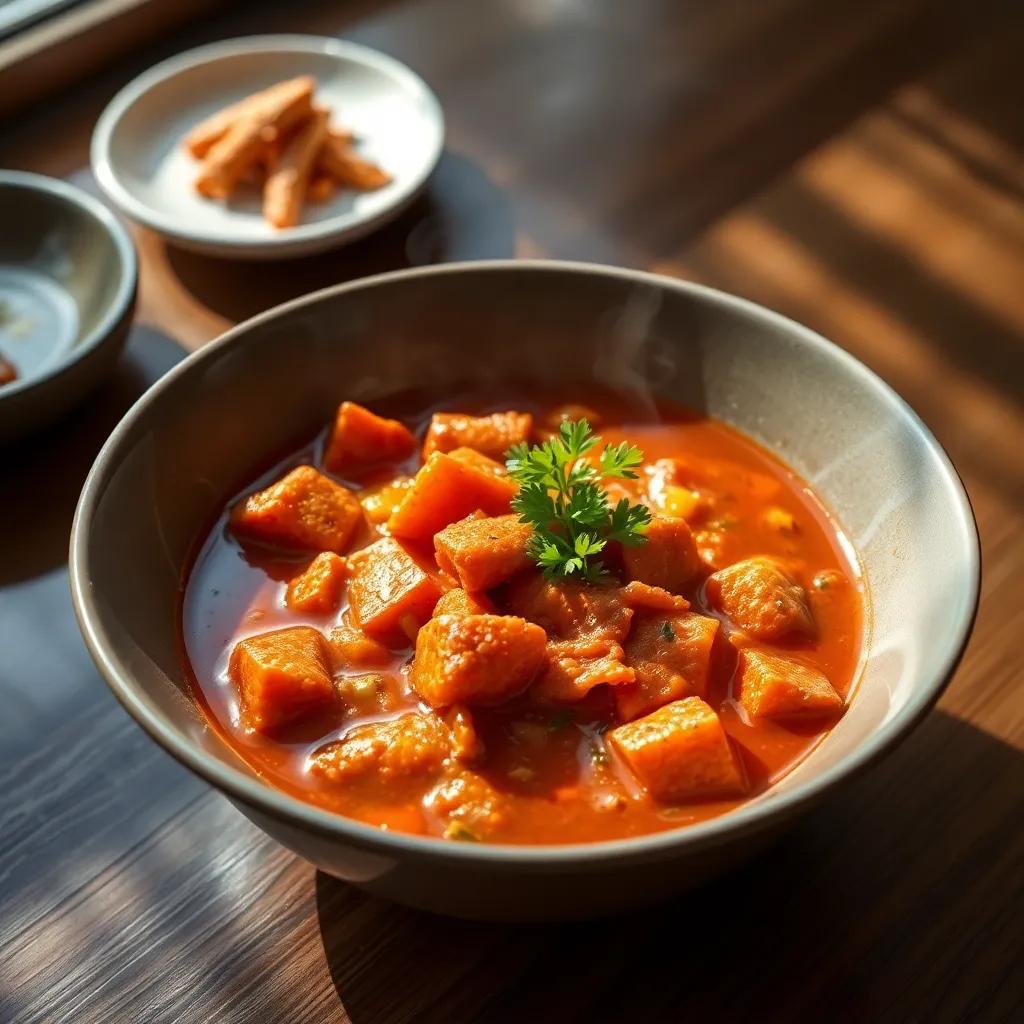
Behind the Recipe
Kimchi jjigae is more than just a stew—it’s a culinary story steeped in Korean tradition and the rhythms of everyday life. Originating centuries ago, this humble dish was born out of practicality and the need to transform leftover kimchi and simple pantry staples into a warming, nutritious meal during Korea’s long, harsh winters. It reflects the resourcefulness of Korean home cooks, who prized bold, layered flavors that could comfort the family around the table while using whatever ingredients were at hand.
For many Korean households, kimchi jjigae is a year-round staple but especially cherished during colder months—a ritualistic bowl that signals home, warmth, and togetherness. The tangy, spicy broth mirrors the complexity of fermentation itself, a reverence for patience and natural transformation. Each spoonful carries a hint of history, a reminder of communal sharing and the vibrant umami palate distinctive to Korean cuisine.
On a personal note, kimchi jjigae often evokes memories of family gatherings, where the bubbling pot is placed right in the center of the table, inviting everyone to dig in, converse, and bond over the hearty, spicy broth. It’s that inviting simplicity—yet profound depth—that makes this stew a favorite not only in Korea but increasingly around the world. Making kimchi jjigae at home connects you to centuries-old traditions and the everyday warmth of Korean culture, offering a delicious gateway into its rich culinary heritage.
FAQ
Can I use fresh kimchi instead of aged kimchi for Kimchi Jjigae?
Is it okay to substitute pork with tofu or chicken?
How can I store leftovers and reheat Kimchi Jjigae?
Can I freeze Kimchi Jjigae for later meals?
What can I serve with Kimchi Jjigae to make a complete meal?
How spicy is Kimchi Jjigae, and can I adjust the heat level?
Bon Appétit!
Embracing the rich, tangy depths of kimchi jjigae is like sharing a comforting hug from Korean cuisine itself—bold flavors, simple ingredients, and heartwarming tradition all simmered into one satisfying stew. Whether you’re a seasoned kimchi lover or a curious kitchen adventurer, this easy recipe invites you to bring a taste of Korea into your own home with confidence and joy.
We’d love to hear how your kimchi jjigae turns out! Feel free to leave a comment, share your favorite twists, or rate the recipe to help fellow food enthusiasts on their flavorful journey. Happy cooking, and may your stew always be warm and welcoming!


